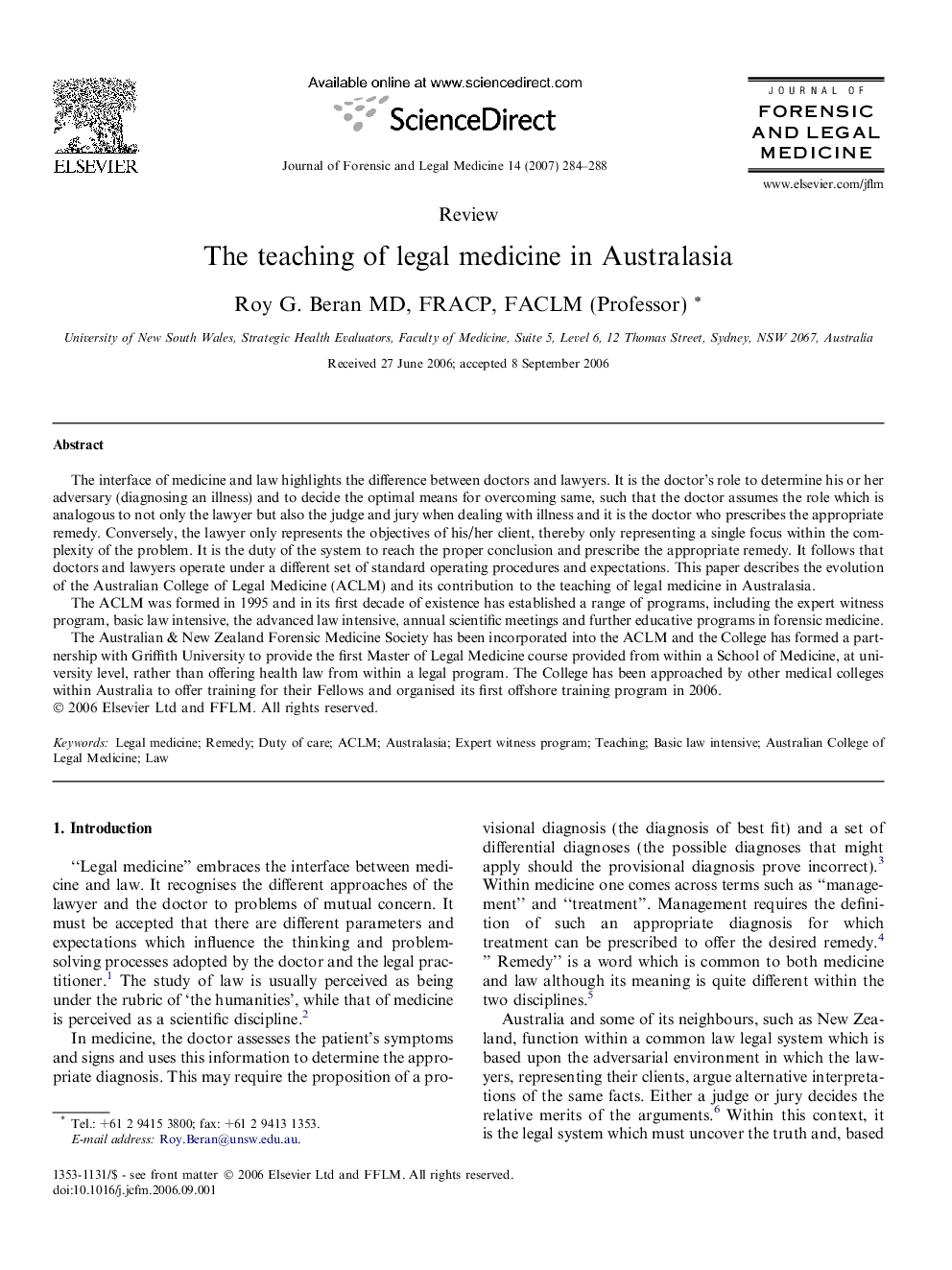| Article ID | Journal | Published Year | Pages | File Type |
|---|---|---|---|---|
| 102943 | Journal of Forensic and Legal Medicine | 2007 | 5 Pages |
The interface of medicine and law highlights the difference between doctors and lawyers. It is the doctor’s role to determine his or her adversary (diagnosing an illness) and to decide the optimal means for overcoming same, such that the doctor assumes the role which is analogous to not only the lawyer but also the judge and jury when dealing with illness and it is the doctor who prescribes the appropriate remedy. Conversely, the lawyer only represents the objectives of his/her client, thereby only representing a single focus within the complexity of the problem. It is the duty of the system to reach the proper conclusion and prescribe the appropriate remedy. It follows that doctors and lawyers operate under a different set of standard operating procedures and expectations. This paper describes the evolution of the Australian College of Legal Medicine (ACLM) and its contribution to the teaching of legal medicine in Australasia.The ACLM was formed in 1995 and in its first decade of existence has established a range of programs, including the expert witness program, basic law intensive, the advanced law intensive, annual scientific meetings and further educative programs in forensic medicine.The Australian & New Zealand Forensic Medicine Society has been incorporated into the ACLM and the College has formed a partnership with Griffith University to provide the first Master of Legal Medicine course provided from within a School of Medicine, at university level, rather than offering health law from within a legal program. The College has been approached by other medical colleges within Australia to offer training for their Fellows and organised its first offshore training program in 2006.
